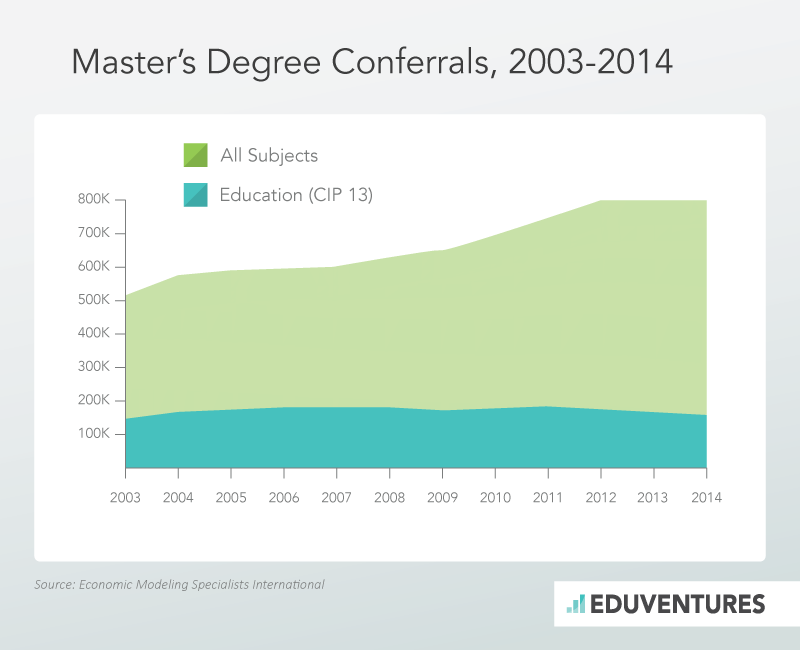Overall, legislative support for the bipartisan Every Student Succeeds Act (ESSA), which replaces No Child Left Behind (NCLB), is strong. The reaction from schools of education, meanwhile, has been cautious—and for good reason. There are critical concerns that provisions in the new law will favor alternative preparation programs outside of higher education and will lower standards of teacher quality, especially for high-poverty schools.
To prepare for a new regulatory era that has the potential to impact teacher preparation, it’s important to understand the context of broader trends in the master’s market. What are the implications of these trends? What strategies will make schools of education successful in the next 5-10 years?
First, let’s take a moment to examine the provisions of ESSA. Title II of ESSA allows states to use up to 2% of funds to create teacher academies that operate outside of higher education. For the purposes of pay and promotion, certificates from these academies can be considered comparable to a master’s degree. Unlike institutions of higher education, these academies might not be accountable to accrediting bodies. Bear in mind that this is not a mandate but an allowable state action. It’s more likely to occur in states where there are severe teacher shortages and in high-poverty, rural districts.
From a legislative perspective, these provisions may provide a funding incentive for innovation in teacher preparation. To the institutions that currently prepare 90% of teachers and are facing increasing pressure to demonstrate their quality through completer outcomes, however, these provisions may certainly feel like a slap in the face.
What’s less understood about the current state of teacher prep is the fact that degrees in education, particularly at the master’s level, have undergone a significant transformation in the past decade. One can speculate that this transformation was driven at least in part by the provisions of NCLB that incentivized teachers to pursue advanced degrees to gain “highly qualified teacher” status. More important than their catalyst, though, is the picture these trends paint of the current education degree market.
 Additionally, there has been a shift in the types of master’s degrees being conferred in education. According to our analysis, the overall share of conferrals of master’s degrees in teacher preparation relative to all master’s degrees has been declining, falling from 19% in 2003 to less than 12% in 2014.
Additionally, there has been a shift in the types of master’s degrees being conferred in education. According to our analysis, the overall share of conferrals of master’s degrees in teacher preparation relative to all master’s degrees has been declining, falling from 19% in 2003 to less than 12% in 2014.
The Shift in the Master’s Degree Market
The composition of the master’s market has shifted significantly since 2003, when degrees in education accounted for 29% of all master’s degrees. Through 2007, demand for degrees in education grew along with the broader master’s market. In 2008, however, the portion of education conferrals relative to all master’s conferrals began to decline. By 2014, master’s degrees in education constituted only 20% of all master’s conferrals. This change—from 1 in 3 degrees to 1 in 5 degrees—is significant not only for a school of education, but also for the broader university that is looking to sustain itself. Additionally, there has been a shift in the types of master’s degrees being conferred in education. According to our analysis, the overall share of conferrals of master’s degrees in teacher preparation relative to all master’s degrees has been declining, falling from 19% in 2003 to less than 12% in 2014.
Additionally, there has been a shift in the types of master’s degrees being conferred in education. According to our analysis, the overall share of conferrals of master’s degrees in teacher preparation relative to all master’s degrees has been declining, falling from 19% in 2003 to less than 12% in 2014.

